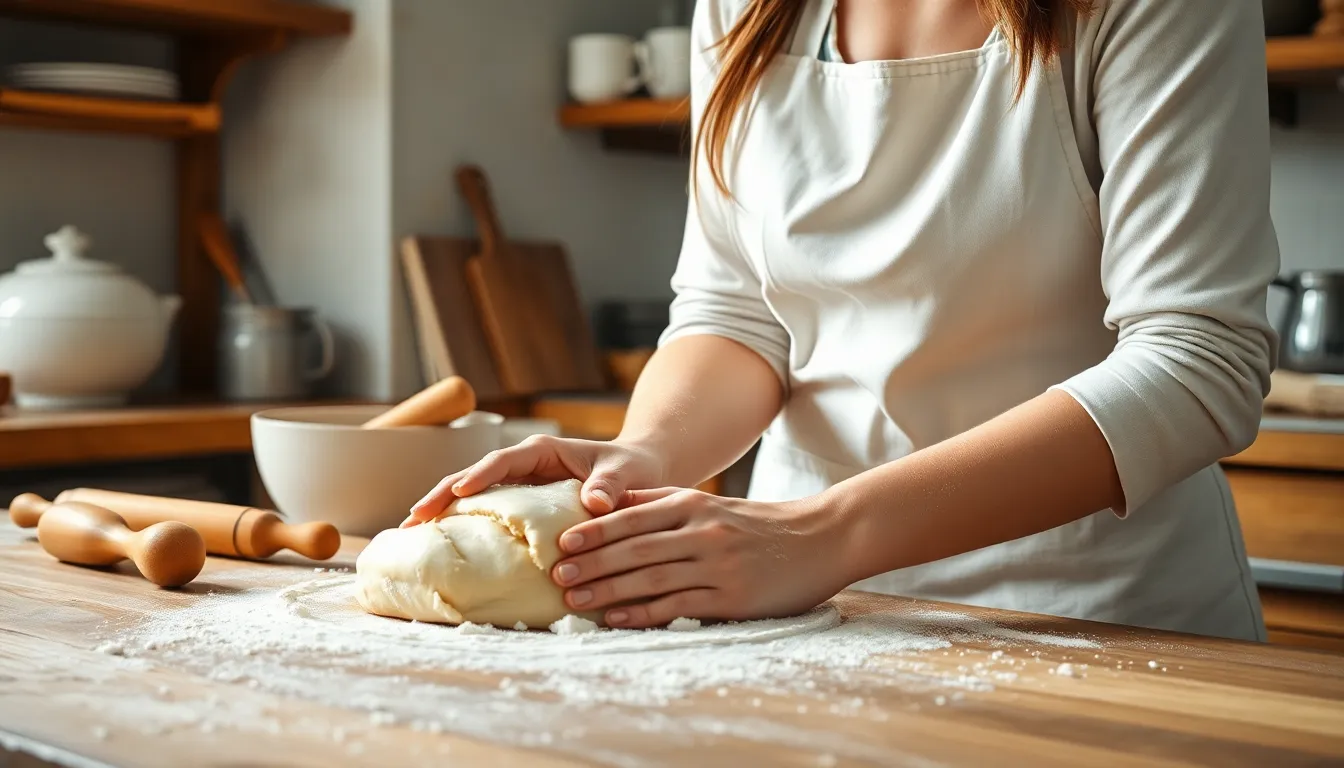Table of Contents
ToggleIn the culinary world, the right technique can transform a simple meal into a gourmet experience. Whether it’s mastering the art of sautéing or perfecting the delicate dance of baking, each technique has its own flair and finesse. It’s not just about following a recipe; it’s about unleashing creativity and discovering the magic that happens when heat meets ingredients.
Overview of Cooking Techniques
Cooking techniques are essential for transforming ingredients into diverse dishes. Various methods, such as grilling, steaming, and roasting, contribute unique flavors and textures. Grilling gives meats a charred taste, while steaming retains nutrients in vegetables. Each technique requires specific equipment and temperature control to achieve desired results.
Sautéing involves cooking food quickly in a small amount of oil over high heat. Chefs often use this technique for vegetables or proteins, allowing them to develop flavor without becoming mushy. Baking, on the other hand, involves dry heat in an oven, making it ideal for bread and desserts. The Maillard reaction enhances flavors and creates appealing crusts during baking.
Additionally, braising combines both wet and dry heat to prepare tough cuts of meat. This technique involves searing food first, then slowly cooking it in liquid. Slow cooking achieves tenderness and depth of flavor in stews and sauces.
Poaching offers a gentle cooking method that involves submerging food in liquid, such as water or broth. This technique is popular for eggs and fish, allowing them to cook without becoming tough.
Each of these cooking techniques showcases the artistry and science of cooking. Mastery of these methods enhances culinary skills and enables home cooks to create memorable meals. Aspiring chefs can explore different techniques to expand their repertoire and impress diners. Understanding these techniques provides a foundation for culinary success.
Baking Techniques

Baking involves various methods that create distinct flavors and textures in food. Professionals and home cooks alike rely on specific baking techniques to achieve optimal results.
Types of Baking
Types of baking include bread baking, pastry baking, and cake baking. Bread baking focuses on yeast fermentation and gluten development, resulting in airy loaves. Pastry baking emphasizes creating flaky layers through techniques like lamination, ideal for croissants and puff pastries. Cake baking revolves around mixing sugars, fats, and flours to produce tender, moist desserts. Each type provides unique challenges and rewards, allowing bakers to explore creativity.
Essential Ingredients for Baking
Essential ingredients for baking consist of flour, sugar, eggs, and fats. Flour acts as the foundation, providing structure through gluten formation. Sugar contributes sweetness and influences browning, enhancing flavor. Eggs function as a binding agent and moisture source, adding richness. Fats, such as butter or oil, create tenderness and flavor while assisting in leavening. Each ingredient plays a crucial role in achieving successful baking outcomes.
Grilling Techniques
Grilling is a popular cooking technique that adds depth of flavor to various foods. It creates a unique charred taste and is perfect for meats, vegetables, and even fruits.
Equipment Needed for Grilling
Essential tools for grilling include a grill, grill brush, and tongs. A reliable grill, whether charcoal or gas, forms the foundation of the process. Grill brushes keep the grates clean for even cooking. Tongs are crucial for flipping food and removing items safely. Additional items such as a meat thermometer ensure proper cooking temperatures. Using aluminum foil can also help with delicate items like fish or vegetables. Finally, a good set of skewers is ideal for kebabs, maximizing flavor while keeping ingredients together.
Tips for Perfect Grilling
Focusing on temperature control is key to successful grilling. Preheating the grill ensures even cooking through proper heat distribution. Marinades and rubs enhance flavor profiles, providing a caramelized crust. Cutting food into uniform sizes promotes even grilling, preventing overcooked or undercooked pieces. Avoiding excessive flipping helps maintain those beautiful grill marks. Monitoring food closely with a meat thermometer assists in achieving desired doneness. Lastly, allowing grilled meats to rest enhances juiciness, making each bite flavorful and satisfying.
Sautéing and Stir-Frying
Sautéing and stir-frying are quick cooking methods that enhance ingredients’ flavors while preserving their textures. These techniques involve high heat and minimal cooking time, allowing for vibrant, fresh dishes.
Key Differences
Sautéing typically uses more oil and a wider pan, promoting even heat distribution. Stir-frying requires less oil and a wok for optimal stirring and tossing. Sautéing relies on direct contact with the pan’s surface, whereas stir-frying continuously moves food to ensure even cooking. In sautéing, larger ingredient pieces provide a varied texture; stir-frying focuses on uniform, bite-sized pieces for quick cooking.
Best Practices for Success
Choosing the right oil is crucial; opt for oils with high smoke points, such as canola or peanut oil. Preparing all ingredients in advance ensures a smooth cooking process without interruptions. Maintaining a hot pan is essential to achieve the desired sear on ingredients. Adding aromatics like garlic or ginger early boosts flavor. Finally, avoiding overcrowding the pan helps cook ingredients evenly and prevents steaming.
Sous Vide Cooking
Sous vide cooking represents a precision method that transforms food preparation through controlled temperature. This technique involves vacuum-sealing food in a bag and cooking it slowly in a water bath at a consistent temperature. As a result, flavors intensify while maintaining moisture and texture.
Understanding Sous Vide
Understanding sous vide entails recognizing its principles. The technique allows for cooking food evenly, ensuring that proteins reach the desired doneness without overcooking. Cooking at lower temperatures compared to traditional methods enhances flavors and tenderness. Additionally, sous vide equipment varies from immersion circulators to sophisticated water ovens, offering flexibility for home cooks and professionals alike. Maintaining specific temperatures for sustained periods helps achieve culinary perfection, transforming even tough cuts into tender meals.
Advantages of Sous Vide
Advantages of sous vide cooking include enhanced flavor retention and superior texture. Precise temperature control prevents overcooking, resulting in perfectly cooked meats and vegetables. Food can be seasoned before sealing, allowing flavors to infuse throughout the cooking process. Additionally, this method minimizes the risk of microbial growth, ensuring food safety. Time management benefits cooks by allowing for multitasking since sous vide requires less active cooking time. Sous vide also provides convenience; prepared meals can remain in a water bath until ready to serve, ensuring consistent results every time.
Mastering various cooking techniques opens up a world of culinary possibilities. Each method brings unique flavors and textures to dishes, allowing home cooks to experiment and create memorable meals. Whether it’s the precision of sous vide or the charred delight of grilling, these techniques enhance not just the food but also the cooking experience.
Embracing creativity in the kitchen transforms everyday cooking into an art form. By understanding and applying these essential techniques, anyone can elevate their culinary skills and delight friends and family with gourmet-quality meals. The journey of cooking is one of exploration and enjoyment, making every dish a potential masterpiece.






